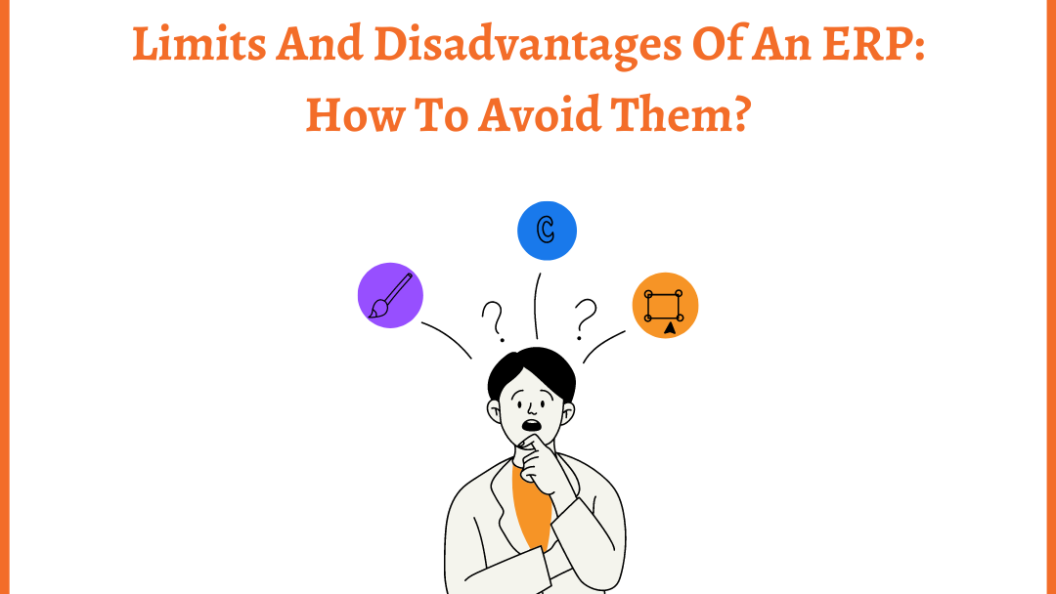For a long time, ERP has taken its place among the strategic IT solutions that the company must consider in its arsenal. A working tool in a multitude of contexts, ERP has also received criticism on its limits and drawbacks. What does an ERP know how to do well, and what are its weak points? A good understanding of the scope of an ERP makes it possible, on the one hand, not to be disappointed by the tool, and on the other hand, to find the solutions available to circumvent such or such a limit.
Let’s start by recapping what ERP excels at. ERP is a solution designed to manage and analyze operational data. To achieve this, the ERP collects them at all the points where they are generated and centralizes them in its database. The interest: is to connect them, so that they mutually provide context, analyze them according to all the rules of management of the activity, and the company to come up with performance and management indicators. Thus, the ERP gives visibility on everything that happens in the activity and generates savings, optimizations, and better performance.
However, to achieve these results, an ERP requires total integration within the company’s information system, which represents a real strategic project, but is also the cause of many criticisms – too heavy, too expensive, too complicated, not flexible enough, nor scalable…. What exactly is it?
“An ERP is too expensive”
An ERP indeed involves a certain acquisition cost – hardware, licenses, integration, user training – and ownership costs, in particular maintenance and updates over the entire life cycle. But on the ERP market, this traditional on-site deployment sits alongside SaaS offerings, i.e. cloud-hosted ERPs, available online in service mode. The cost structure is then different, moving from an investment to an operating expense. The latter corresponds to the price of a monthly subscription calibrated for the number of users and desired features. This subscription, therefore, replaces the costs of acquisition and ownership of the other model and proves to be much more economical access to an ERP.
Either way, hosted on-premises or in the cloud, it should not be overlooked that ERP generates such savings and removes so many burdens, that its ROI is the best response to its cost. It is, therefore, necessary to consider the question of the cost of the ERP in a long-term perspective and to calculate all the financial gains that it will generate.
“ERP implementation is overly complicated.”
Inevitably, a system that is fully integrated into the company, consolidates all the rules for managing the activity, and collects data in all the departments requires an implementation of the same scope. Hence the criticisms point to a questioning of the company’s processes, heavy configuration, and difficulty interfacing with the information system.
It’s all about preparation. Indeed, equipping yourself with an ERP requires overhauling all the company’s processes, an essential step in defining the expected functionalities and guiding the choice of the solution. It’s the perfect — not to say unique — the opportunity to streamline processes, eliminate duplicates, and identify what’s missing or not well-established. All to start again on sound and relevant process management rules.
In addition, this preparatory work makes it possible to define the expected functional field and to make it THE primary criterion for choosing the solution. Therefore, the company that opts for an ERP adapted to its processes and its functional needs has little risk of coming up against a problem of poorly adjusted scope. In other words, rigor, anticipation, and preparation of the project are the best allies to circumvent many of the heavinesses often criticized for ERP.
“There is always a boundary where the ERP demonstrates a weakness.”
ERPs come in the form of modules, each dedicated to a functional package. In some projects, companies reacted to uneven quality between modules. Another remark in this sense: an ERP always has a weak point.
You should know that ERPs of different profiles occupy the market. Some are generalists, including solutions from world-renowned publishers. Others are designed for smaller structures. ERPs will also become vertical with functionalities specific to a business. It is therefore necessary to fully understand this varied offer and to make the right choice to rule out any “weak” functionality on a critical perimeter for the company.
Thus, industrial companies cannot do without functionalities specific to their trades, in particular Computer Aided Production Management (CAPM). An ERP that has difficulty following manufacturing processes in all their subtleties – for example, supply requests, stock movements, ordering of OFs, monitoring of the quality of the parts produced, etc. – will inevitably fall short of expectations. It is therefore recommended to choose an industrial ERP designed with all the required features as standard. When this is the case, the ERP has no reason to have a weak point on the most strategic parameters.
“An ERP is difficult to learn”
An ERP indeed implies changes in working habits and proves to be a solution with a vast functional field that users must learn to use. This is why it is necessary to prepare the handling of the solution well before it enters service in the company.
Tool training is essential. It should not be forgotten that if the company has chosen an ERP well suited to its activity, its use will follow business logics that users have acquired before switching to the new ERP interface, which also facilitates the adoption of the tool.
When the deployment of the ERP generates major metamorphoses, you should not hesitate to plan a change management action. Like training, this initiative is anticipated well before the implementation of the ERP, upstream of the project.
“ERPs are rigid and not very scalable”
This remark deserves all the more to be challenged as the ERP brings precisely a lot of flexibility in the operations. Indeed, it instills consistency and homogeneity in the data and avoids many tedious manual entries, such as redundancies. By interconnecting the operational data of all departments, ERP breaks down silos and streamlines communication. Finally, its analysis of data, the resulting trends, and indicators facilitate anticipation. It is thus a key performance and responsiveness tool.
However, some companies indeed find themselves struggling with an ERP that no longer allows them to develop. This is often the case when the company has not done a real 5/10 year projection work to anticipate the functionalities it will need in the future. New trends and requirements, particularly related to digitalization, are emerging at the heart of the industry. This comes back, once again, to the ERP project itself and all the preparatory work to be done upstream.
It should also be noted that ERP publishers invest in R&D to develop their solutions, and adapt them to connectivity with more recent-generation software solutions during their life cycle. Finally, in their SaaS versions, ERPs are solutions kept at the forefront and very scalable.
In summary, a meticulously conducted and documented ERP project gives the industrial company every chance of installing a solution that is perfectly adapted to its activity and meets its expectations.


